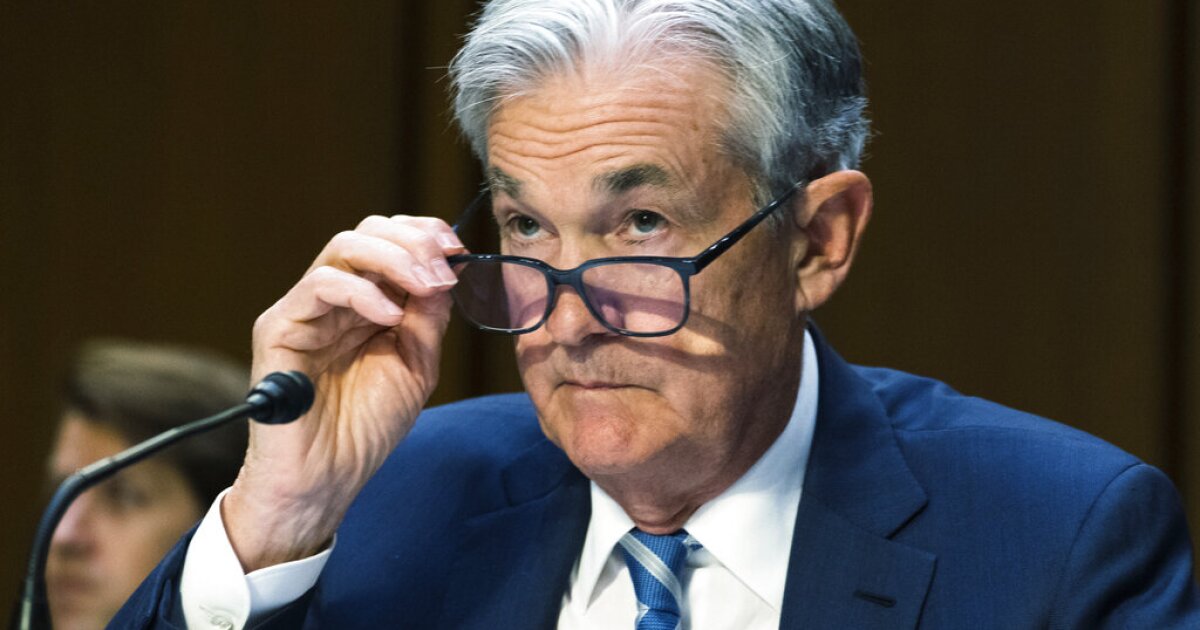

The strong jobs numbers for June will only give the Federal Reserve resolve in its plans to send interest rates ever higher.
The economy added another 372,000 jobs in June — more than 100,000 more jobs than most economists had expected. The better-than-anticipated news gives the Fed a bit more leeway in pursuing big rate hikes because the labor market remains strong enough to act as a bit of a cushion.
“Certainly this data could suggest the Fed’s going to, more likely than not, continue along its path, especially given there was continued wage growth here,” Brian Marks, the executive director of the University of New Haven’s entrepreneurship and innovation program, told the Washington Examiner on Friday.
The central bank hiked its interest rate target by a whopping three-fourths of a percentage point last month for the first time since 1994. The Fed typically raises rates by a quarter of a percentage point, or 25 basis points, so the June hike was comparable to three simultaneous rate increases.
WORLD BANK CHIEF ECONOMIST ‘SKEPTICAL’ ABOUT US ABILITY TO AVOID RECESSION
Fed officials have also signaled that there might be another 75-basis-point hike in store for the central bank’s July meeting, meaning that in just two months the Fed will have essentially jacked rates up six times.
That dramatic action comes at a cost — slowing spending. While an economic slowdown is inevitable, the degree to which it slows is the million-dollar question for economists right now.
That’s why the strong jobs report is such good news for the central bank. Had the jobs numbers come in far below expectations, it would make it more likely that the Fed’s rate-hiking action would cause the economy to crater into a recession.
Economists with Oxford Economics said after Friday’s new job numbers dropped that the report supports their prediction that the Fed will push ahead with another hike later this month. They said the report provides the central bank “room” to move forward.
Cailin Birch, a global economist at the Economist Intelligence Unit, said that the report gives the Fed cover for its more hawkish monetary stance, even if other economic indicators aren’t looking quite as hot.
“Another strong jobs report fits with the Fed’s view that the economic activity remains firm and may encourage the Fed to continue to take a more aggressive approach to tightening,” Birch said Friday.
Despite the strong job numbers, Fed Chairman Jerome Powell will be challenged to pull off a “soft landing,” which is when the Fed is able to raise interest rates at a brisk enough pace to drive down inflation while simultaneously avoiding recessionary conditions. Historically, it has been difficult for central banks to do so.
“We think that there are pathways for us to achieve the path back to 2% inflation while still retaining a strong labor market. We believe we can do that,” Powell recently said, although he added that “there’s no guarantee that we can do that.”
Some prominent people and institutions are convinced that despite the positives in the economy, because the Fed is so behind the curve in bringing up interest rates, a recession is inevitable or has already arrived.
The Conference Board, a major nonprofit business research group, recently released a survey that found most CEOs are now projecting a recession or say that their area is already in a recession. Nomura, a major financial firm, is also penciling in a mild recession beginning in the fourth quarter of this year.
The National Bureau of Economic Research, a private academic group, defines a recession as “a significant decline in economic activity that is spread across the economy and that lasts more than a few months.” Two straight quarters of downward growth are typically seen as recessionary.
The economy contracted at a 1.6% annual rate in the first quarter. The Atlanta Fed’s “GDP Now” tracker indicates that gross domestic product growth will decrease in a second straight quarter, which would likely indicate that the country is in a recession.
Other indicators, such as commodity prices, are also ringing alarm bells. The prices of oil, cotton, lumber, and copper have all recently been in decline, signaling that demand is falling off as the Fed quickly hikes rates.
CLICK HERE TO READ MORE FROM THE WASHINGTON EXAMINER
Fed officials have made it clear that the central bank will not veer from its mission of crushing the worst inflation in decades, even if it means the economy will slow down.
“In the long run, price stability is more important than any recession risk. June job numbers are helpful on that front,” said Ryan Young, a senior fellow with the Competitive Enterprise Institute.






